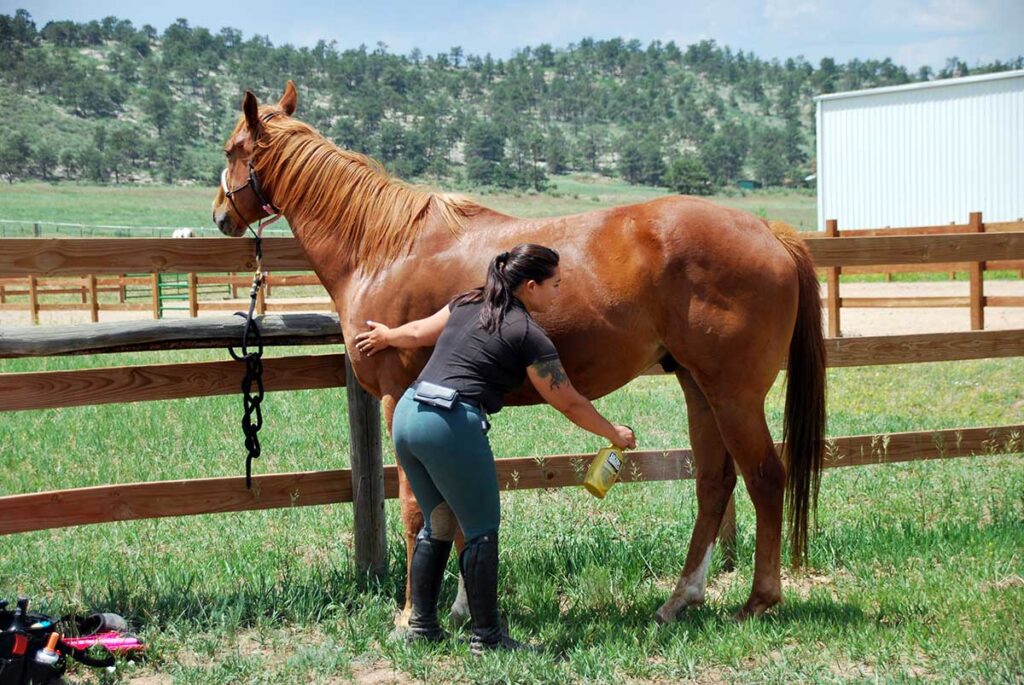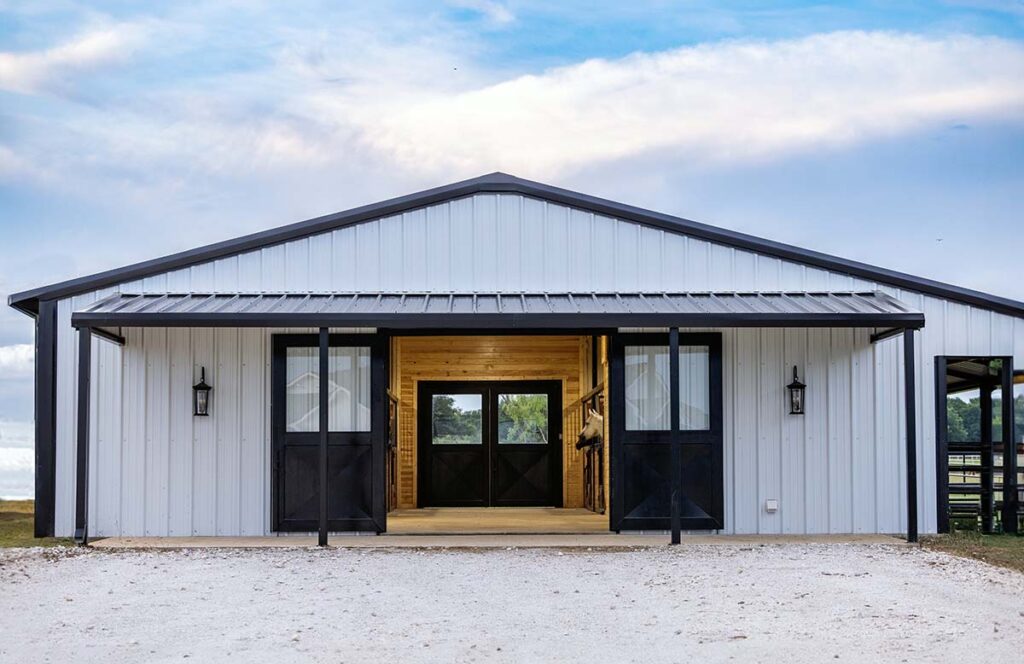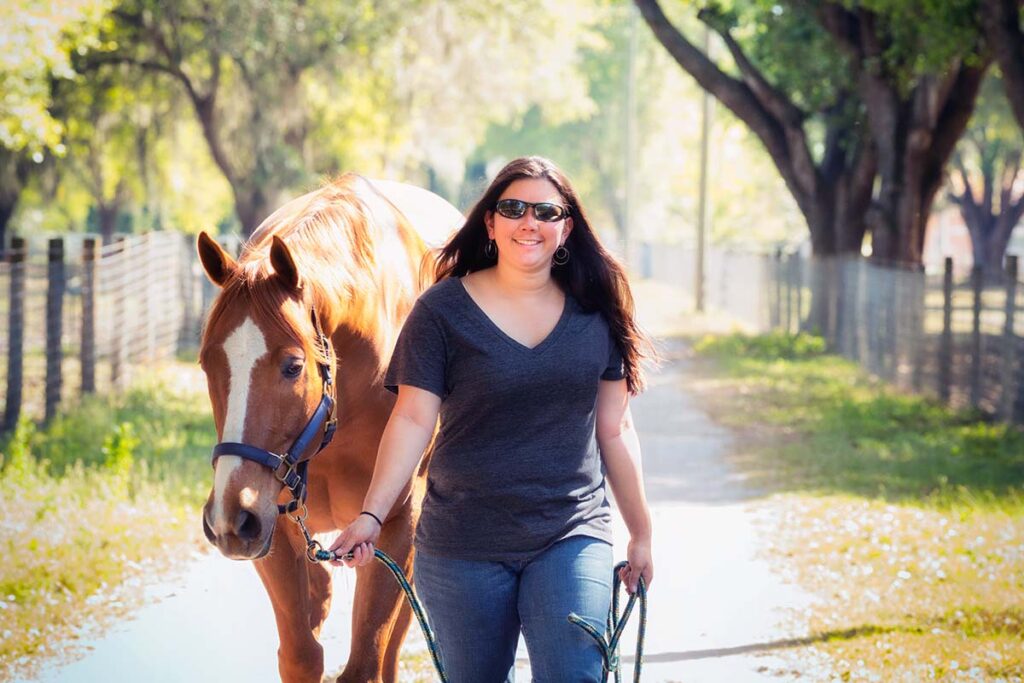They’re the strongmen of the horse world, blending both power and patience in one gargantuan package. But there’s a lot more to draft horses than meets the eye.
Once the preferred mounts of medieval knights, these “super-sized” equines have a long and colorful history of service to humankind. That service continues to this day, thanks to a renewed appreciation of their beauty and versatility.
The word “draft” (or “draught”) refers to an animal’s ability to pull heavy loads. Draft horse breeds come in a range of sizes, depending on the job for which they are bred. But it is the massive heavy drafts that have captivated the imagination for centuries. These noble beasts tower up to 20 hands high and weigh 2,000 pounds or more. Considering that an average saddle horse stands between 15 and 16 hands and tips the scales at about 1,000 pounds, the difference is very impressive! But don’t let their size intimidate you; most drafts are good-natured family animals.
Draft Horse Breeds: A History of Service
“Great horses” of the draft type emerged in Europe during the Ice Age and were known to exist at the time of Caesar. By the early medieval period (500-1000 A.D.), the father of modern drafts—the so-called “Black Horse of Flanders” — was cultivated for his strength and endurance, qualities necessary for toting armor-clad knights into battle.
During times of peace, those same traits rendered drafts indispensable in both town and country—whether pulling a plow, a wagon, a carriage, or heavy logs in the forest.
Indeed, they helped settle the New World, hauling families across the frontier, tilling their land, clearing forests, and carting ore from mines. They proved useful in the cities, as well, and by the late 19th century were towing everything from coaches and fire trucks to circus wagons and canal boats.
Yet the advent of the truck and the tractor nearly put an end to these amazing equines. After World War I—in which many drafts played a role—the heavy horse population fell into decline.
Today, drafts are making a powerful comeback thanks to a renewed interest in farming and logging practices that are both economical and environmentally conscious. Equipped with natural traction control, they’re more satisfying to work with than cold steel and rubber. In many cases, they’re also more efficient and don’t pollute the air.
Drafts have also been rediscovered in the recreational sector. There’s no more magnificent sight than a draft team in full regalia at a major horse show, where the “big hitches” are now welcome attractions. State and county fairs have resurrected the draft harness, conformation, and pulling classes. The various breed associations host national shows and even world congresses. Clinics in draft showmanship and horsemanship abound. Even the medieval spectacle of jousting has enjoyed a revival.
Thanks to meticulous breeding programs, the future of the draft horse now seems secure. And the current trend toward “sport horses” bodes well for these behemoths. Draft crosses are in particular demand for many equestrian pursuits.
Popular Draft Horse Breeds

Clydesdale
To many people, the term “draft horse” means one thing: the world-famous Budweiser Clydesdales. Introduced by Anheuser-Busch after the repeal of Prohibition, this flashy eight-horse hitch has been the breed’s best advertisement for nearly 70 years. The Clydesdale was first bred by 19th-century farmers in the Lanarkshire (formerly Clydesdale) district of Scotland. Blessed with a huge hoof, a long stride, and an abundance of protective hair (or “feathers”) around the legs, he was perfect for working rugged terrain, not to mention coalfields and forests.
The modern Clydesdale is typically bay, black, brown or chestnut with white legs and face. The breed’s distinctive appearance and high-stepping style make him an ideal parade horse. Clydesdales and Clyde crosses also excel as hunter/jumpers, dressage, and even trail horses. According to the Clydesdale Breeders of the USA, they are also used for therapeutic riding.
Belgian
The Belgian draught horse outnumbers all other draft breeds combined in this country. He originated in the tiny country of Belgium, where he is believed to have provided the genetic foundation for many other types of draft horse.
America’s love affair with Belgians began after their exhibition in the 1903 World’s Fair. Soon chestnuts or sorrels with white blazes and socks were all the rage, and the coloration became their trademark in this country.
The modern American Belgian is a compact, docile fellow with good bone, a stylish head and neck, and short, stocky legs. He is a study in both economy and power, with a vigorous way of moving either in the traces or under saddle.
Percheron
Another well-known draft is the mighty Percheron, a largely gray or black animal from the Le Perche province of France. This breed forged its reputation in the coaching trade, where its generally light color made for increased visibility.
Close-coupled and heavily muscled, the Percheron boasts a refined head that hints of Arabian ancestry. Endowed with a pleasant, workmanlike disposition, he was the first of the draft breeds to come to America. And no wonder: He is versatile enough to haul timber one day and pull a carriage with flair the next.
Shire
England’s best-known draft breed is the elegant Shire. A descendant of the Old English Black Horse, he hails from the English Midlands and was given his name by King Henry VIII. A strong yet gentle animal capable of moving more than five tons, the Shire is the largest of the British drafts. He has a slight Roman nose and is generally bay, black, or gray, with a striking blazed face and flashy, white feathered legs. A cart horse extraordinaire in his native country, the Shire proved equally popular in urban America. Here he often pulled brewery drays through the city streets. These days, he is ridden and driven primarily for pleasure or show.
There are numerous other draft breeds around the world. The Suffolk Punch, the American Cream, the Irish Draught, the Russian Heavy Draft, the North American Spotted Draft, the Ardennes … and the list goes on.
Tips for Prospective Draft Owners
Interested in a BIG purchase? Once you get acquainted with draft horses, size ceases to be an issue. They’re typically very easy to train, level-headed, and easy to handle.
Still, there are a few things to which a draft “newbie” must adjust—like picking up the animals’ humongous feet. Luckily, most drafts adapt readily to outdoor life and get by on the same rations as a large Thoroughbred. But if stabled, their box stalls should be more spacious than the standard 12-by-12-foot affair. And be sure to invest in a sturdy mounting block; it’s tough to enjoy these horses without one!
Above all, research your prospective purchase before snapping the shank onto that halter. Start by contacting the appropriate breed association and inquiring about local breeders. Also have a good prepurchase vet check before buying.
Then, get set for the ride (or drive) of your life.
Related Reading:
- A Beginner’s Guide to Horse Breeds
- The 10 Best Horse Breeds for Beginners
- 5 Hardy Horse Breeds That Tolerate Winter Well
This article originally ran on Equisearch.
Are you enjoying this content? Sign up for My New Horse’s FREE newsletter to get the latest horse owner info and fun facts delivered straight to your inbox!








